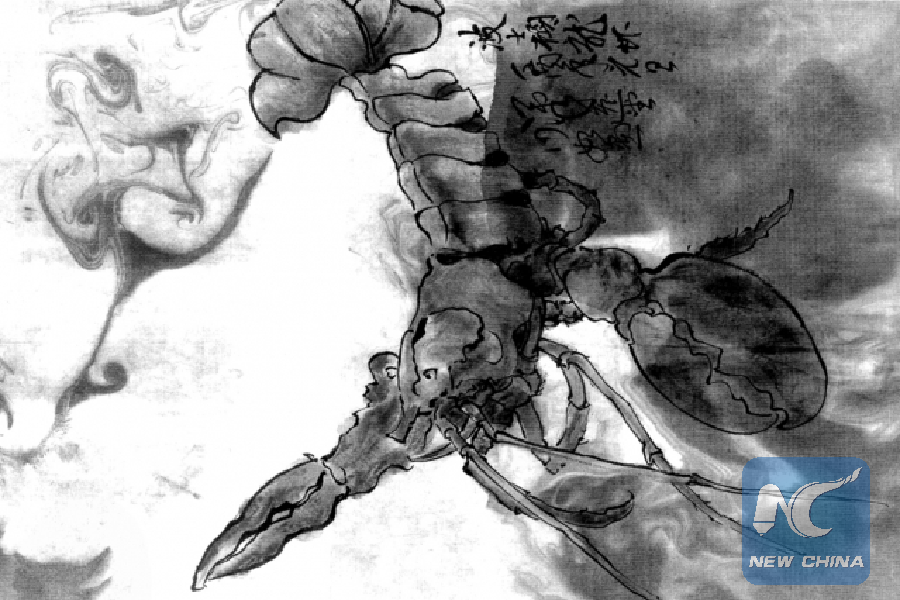
A Boston lobster by Chinese ink wash painting and calligraphy, which uses simple lines with a variant of texture, orientation, and depth to capture the essence of subjects including lobster, rock and wave. (Credit: Yangsheng Li)
WASHINGTON, Feb. 19 (Xinhua) -- American and Chinese engineers have found that a soft, stretchy membrane on lobster's underbelly is as tough as industrial rubber that may lend clues to the design of flexible body armor.
The study published in the latest edition of Acta Materialia showed that the translucent membrane at the back of the lobster's tail had a microscopic, layered, plywood-like structure that makes it remarkably tolerant to scrapes and cuts as the animal scuttles across the rocky seafloor.
The lobster membrane, the toughest material of all natural hydrogels, including animal skins and natural rubber, is about as strong as industrial rubber composites used to make car tires and conveyor belts, according to the study.
Also, the natural hydrogel in the membrane makes it so stretchy that when the lobster whip its tail, a predator is unable to chew through the tail or pull it apart.
The lobster's tough but stretchy membrane could be a design guide for more flexible body armor, particularly for highly mobile regions of the body, such as elbows and knees.
"If you could make armor out of these types of materials, you could freely move your joints, and it would make you feel more comfortable," said Guo Ming, assistant professor at Massachusetts Institute of Technology (MIT), who collaborated the study with researchers from Sichuan University in China.
They found that the membrane was initially floppy and easily stretched, but when it reached about twice its initial length, the material started to stiffen and became progressively tougher.
Using electron microscopy, they identified in the membrane a structure similar to plywood.
The membrane with about a quarter of a millimeter thick is composed of tens of thousands of layers and a single layer contains a large number of chitin fibers oriented at the same angle, precisely 36 degrees offset from the layer of fibers above, according to the study.
"When you rotate the angle of fibers, layer by layer, you have good strength in all directions," said Guo.
Guo said materials with similar structures could also be useful in soft robotics and tissue engineering.

